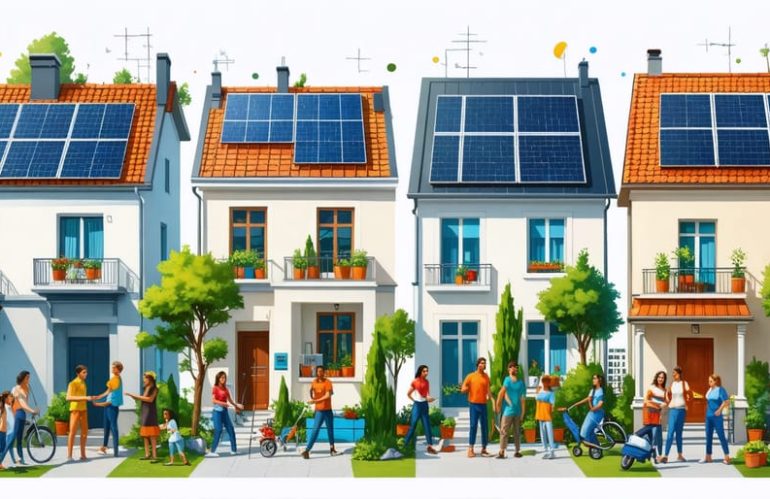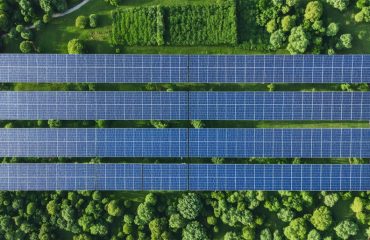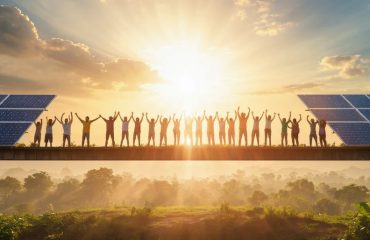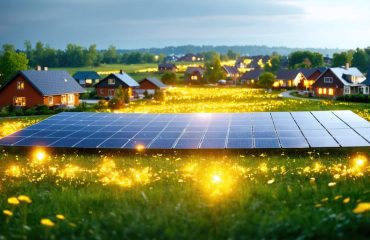Transforming solar energy access for underserved communities starts with understanding the substantial financial assistance available through federal, state, and local grant programs. The Department of Energy’s Solar Energy Technologies Office (SETO) currently offers grants ranging from $50,000 to $5 million to support renewable energy initiatives in low-income neighborhoods. These programs specifically target communities facing energy poverty, with a focus on reducing both installation costs and long-term utility expenses. Recent expansions in grant funding have opened new opportunities for historically disadvantaged communities to embrace clean energy solutions, with simplified application processes and dedicated support services to help navigate the funding landscape. Whether you’re a community organization, local government, or resident seeking to bring solar power to your neighborhood, these grants represent a critical pathway to energy independence and environmental justice.
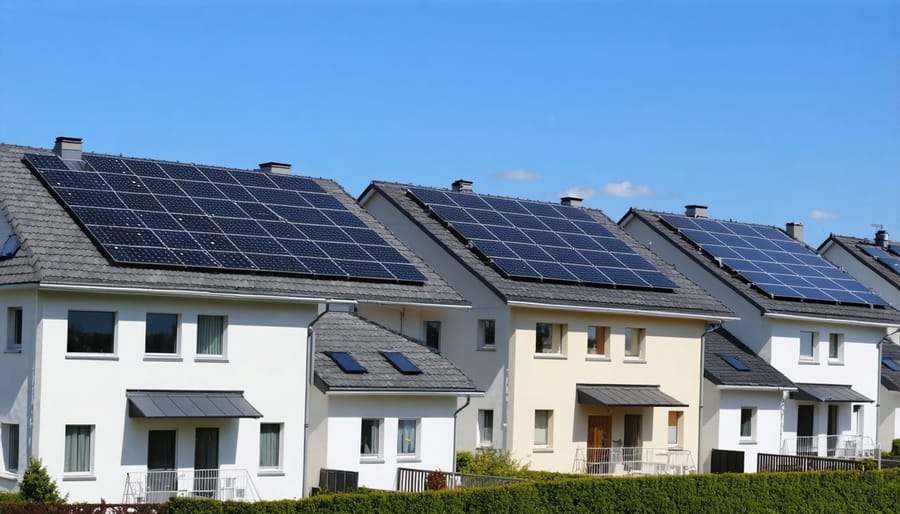
Federal Solar Grants for Low-Income Communities
Department of Energy Solar Programs
The Department of Energy (DOE) offers several solar programs specifically designed to help underserved communities access clean, affordable energy. The Solar Energy Technologies Office (SETO) leads initiatives that provide funding for residential solar installations, with a particular focus on low-income households and historically disadvantaged neighborhoods.
One of their flagship programs, the Solar in Your Community Challenge, awards grants to innovative projects that expand solar access. Communities can receive up to $200,000 in technical assistance and seed funding to develop local solar projects. The application process is straightforward, requiring a project proposal outlining community impact and implementation strategy.
The DOE also partners with state agencies to offer targeted assistance through the Weatherization Assistance Program (WAP). This program combines energy efficiency upgrades with solar installation support, making it particularly valuable for households looking to maximize their energy savings.
To apply for these programs, interested communities should start by contacting their state energy office or visiting the DOE’s online portal. The department provides free technical assistance throughout the application process, ensuring communities have the support they need to submit strong proposals.
Environmental Justice Solar Initiatives
Environmental justice initiatives are making solar power more accessible to historically underserved communities through targeted grant programs. These programs specifically focus on low-income neighborhoods, communities of color, and areas disproportionately affected by pollution and climate change.
The Environmental Protection Agency (EPA) and Department of Energy (DOE) offer several grant opportunities designed to support solar installations in these communities. These programs typically cover 60-100% of solar installation costs and often include additional benefits like energy efficiency upgrades and job training opportunities.
To qualify for environmental justice solar grants, communities usually need to meet specific criteria, including:
– Located in designated environmental justice areas
– Median household income below state average
– Historical exposure to environmental hazards
– Limited access to clean energy infrastructure
Many programs also prioritize projects that provide additional community benefits, such as workforce development, reduced energy costs for residents, and improved air quality. Local organizations, tribal governments, and community groups can apply on behalf of their communities, making these initiatives more accessible to those who need them most.
Applications are typically accepted on a rolling basis or during specific funding cycles throughout the year.
State-Level Solar Assistance Programs
Income-Based Solar Incentives
Income-qualified solar programs make clean energy accessible to families at various income levels, offering substantial financial support for solar installations. These programs typically provide enhanced incentives, including higher rebate amounts and additional subsidies, specifically designed for households meeting certain income criteria.
For example, many states offer programs where families earning below 80% of their Area Median Income (AMI) can qualify for coverage of up to 100% of their solar installation costs. Some programs use a sliding scale approach, where the lower your income, the higher the incentive amount you may receive.
These initiatives often work in conjunction with other federal and state programs, multiplying the benefits for eligible households. Many utility companies also offer their own income-based solar incentives, such as additional rebates or reduced-rate financing options.
To qualify, you’ll typically need to provide proof of income, such as tax returns or pay stubs, and meet specific household size requirements. Some programs also consider factors like energy burden (the percentage of income spent on energy bills) when determining eligibility levels.
It’s worth noting that these programs often have limited funding and may operate on a first-come, first-served basis, so early application is recommended.
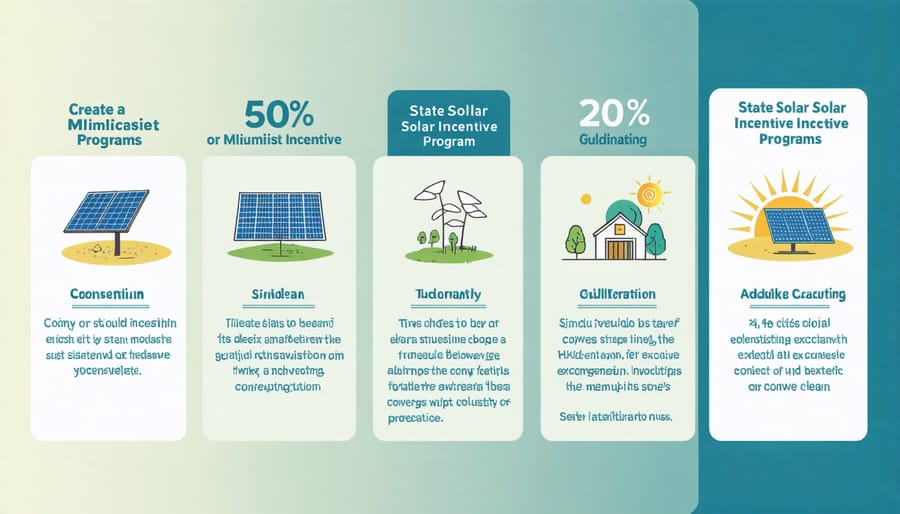
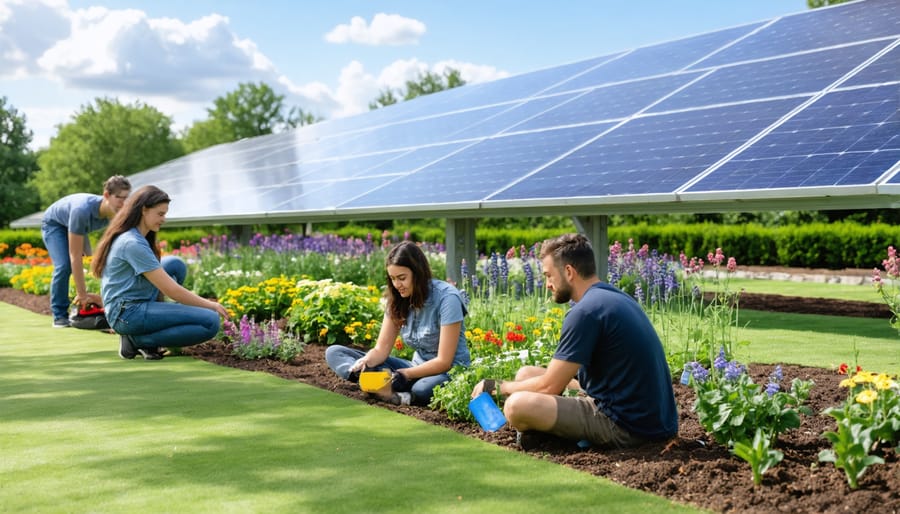
Community Solar Projects
For residents who may not have suitable rooftops or face other installation barriers, community solar projects offer an excellent alternative to access clean energy benefits. These shared solar installations allow multiple households to subscribe and receive credits on their electricity bills, making solar power accessible to renters, apartment dwellers, and those with shaded properties.
Many grant programs specifically support the development of community solar in underserved areas, creating opportunities for entire neighborhoods to benefit from renewable energy. Subscribers typically save 10-15% on their monthly electricity costs while supporting local clean energy production. These projects often prioritize low-to-moderate income households, offering reduced subscription rates and flexible payment terms.
The application process for community solar participation is straightforward, usually requiring only basic utility account information and proof of residency. Some programs offer additional incentives for early adopters or long-term subscribers. Local organizations and community action agencies frequently assist residents in navigating enrollment and understanding their potential savings.
By participating in these shared solar initiatives, community members can reduce their carbon footprint and energy costs without the need for personal installation or maintenance responsibilities.
Non-Profit and Private Sector Support
Solar Foundation Grants
Private foundations across the country are stepping up to make solar energy more accessible to underserved communities through dedicated grant programs. The Solar Forward Foundation offers grants ranging from $5,000 to $25,000 for residential solar installations in low-income neighborhoods, with a straightforward application process that emphasizes community impact.
The Bright Future Foundation provides matching grants of up to $10,000 for community solar projects, particularly focusing on multi-family housing developments and shared solar installations. Their program includes technical assistance and project planning support alongside financial aid.
Several regional foundations have also created solar-specific funding initiatives. The Southwest Solar Foundation serves Arizona, New Mexico, and Texas residents with grants covering up to 50% of installation costs. Meanwhile, the Eastern Solar Alliance provides grants specifically for elderly homeowners and veterans in underserved communities.
These foundation grants often have more flexible eligibility requirements than government programs and can be combined with other incentives to maximize savings. Most foundations accept applications year-round and provide dedicated support staff to help applicants navigate the process.
Corporate Solar Programs
Major corporations are stepping up to make solar energy more accessible in underserved communities through innovative grant programs and partnerships. Companies like Google, Wells Fargo, and Bank of America have launched initiatives that provide funding for solar installations in low-income neighborhoods. These programs typically cover 50-100% of installation costs and often include job training components to boost local employment.
For example, Google’s Project Sunroof Initiative partners with local installers to provide solar grants while offering an easy-to-use platform for assessing solar potential. Wells Fargo’s Solar Innovation Fund has committed $100 million to support solar projects in underserved areas, focusing on both residential and community solar installations.
Many corporate programs also offer matched funding opportunities, where companies double the contributions made by community organizations or local governments. This approach has proven particularly successful in creating sustainable funding models for long-term solar adoption.
To access these programs, communities can typically apply through corporate foundations or partner organizations. Success rates are highest when applications demonstrate clear community benefits and long-term sustainability plans.
How to Apply for Solar Grants
Applying for solar grants in underserved communities might seem daunting, but breaking it down into manageable steps makes the process much more approachable. Here’s how to get started:
First, gather your essential documentation. You’ll need proof of residence, income verification, recent utility bills, and property ownership papers. Having these ready will streamline your application process significantly.
Next, determine your eligibility by checking specific program requirements. Most solar grant programs for underserved communities consider factors like:
• Annual household income
• Geographic location
• Property type and condition
• Current energy usage patterns
Contact your state’s energy office or local utility company to identify available programs. Many communities offer multiple grant options, and you might qualify for more than one. Don’t hesitate to ask questions – program administrators are there to help.
Create a project proposal that includes:
• Estimated solar system size
• Expected energy savings
• Installation timeline
• Contractor quotes (if required)
Submit your application through the appropriate channels, whether online or in person. Be sure to:
• Double-check all information for accuracy
• Include all required attachments
• Meet submission deadlines
• Keep copies of everything you submit
While waiting for approval, consider connecting with others in your community who have successfully installed solar panels. You might even want to launch your own solar initiative to help others navigate the process.
Remember to follow up regularly on your application status. Many programs operate on a first-come, first-served basis, so staying proactive is essential. If your initial application isn’t successful, don’t get discouraged – new funding cycles often open throughout the year, and alternative programs may become available.
Grants for underserved communities represent a vital pathway to clean, affordable energy for all Americans. By taking advantage of these financial assistance programs, homeowners can significantly reduce their energy costs while contributing to a more sustainable future. Whether you qualify through income requirements, geographic location, or other eligibility criteria, there are numerous opportunities available to help make solar power accessible. Don’t let the application process intimidate you – reach out to local solar installers, community organizations, or government agencies for guidance. With proper research and preparation, you can successfully navigate the grant application process and join the growing community of solar-powered homes. Take the first step today by exploring the programs available in your area and start your journey toward energy independence.

